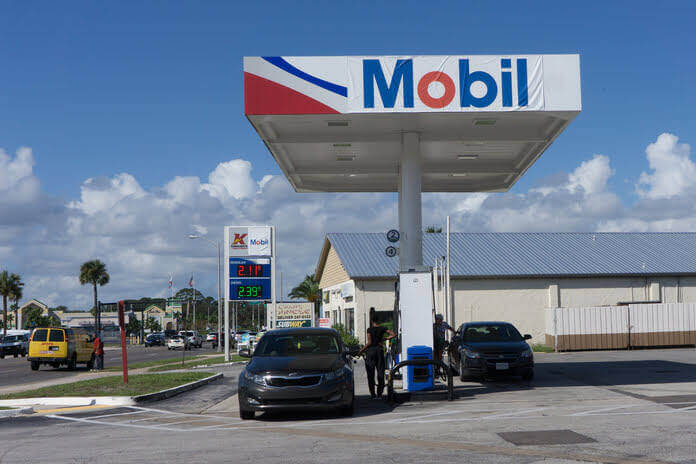For many years, I have sought to accumulate Exxon Mobil stock (NYSE:XOM). While the firm has struggled in recent years, unable to keep up with competitor Chevron (CVX), I believe management has righted the ship, and the company is poised for long-term success.
Commodity Prices / Macroeconomics
Unfortunately, over the previous decade, oversupply of capital, high-quality shale land, and overproduction have plagued the oil and natural gas markets. Despite their best efforts, Exxon failed to perform during this period due to (relatively) low energy prices, crack spreads, and refined product costs.
Long-haul takeaway capacity difficulties have lately subsided as new pipelines come online, posing challenges for midstream operators in particular locations. For example, Exxon Mobil’s Wink to Webster pipeline came online at the end of the Permian takeaway buildout. However, it has 100% of its contractible capacity secured. As a result, it should still add value to Exxon Mobil’s Gulf ecosystem, which is ramping up and on track to increase refining capacity by 17% in Q1 2023 through expansion to the Beaumont refinery complex.
Considering the outlook on commodity prices when making any oil and gas investment is critical. Ignoring costs in favor of investing in “the best businesses” will yield subpar results in the long run (XLE has been roughly flat since 2008).
Regarding oil prices, WTI experienced some respite when OPEC made hawkish remarks and announced a minor output reduction. WTI was oversold at $86 after the overall short commodities trade substantially oversold. However, it has found support near that level with near-term upside potential.
This notion is supported by the volatility-adjusted momentum signal range, which has near-term support in the $80s.
Finally, supply constraints remain, with commercial crude inventories remaining below the 5-year range, providing near-term price support. Given this, I concur with the market’s upward repricing of the long end of the oil curve and predict that undersupply will place a high floor on oil prices. However, as I’ve already stated (LINK), I believe a recession is imminent, weighing on commodities prices. XOM underperformed throughout the 2008 and 2020 recessions, and trading this near-term opportunity will need strict stop-loss discipline.
The Exxon Mobil Advantage
Exxon Mobil’s fully integrated business strategy provides distinct competitive advantages that generate outperformance throughout cycles. These advantages will become more evident as shale inventory downgrades and fresh finds are increasingly focused offshore. In addition, Exxon Mobil has demonstrated its ability to execute in various settings and locations. As a result, I believe it will beat shale concentration producers in the long run. The 11B BOE Guyana find is a beautiful illustration of this, and the firm is dedicated to continuing to invest in this play with the sustained ramp of Liza Phase 2.
Two more finds were also revealed in Q2, bringing Guyana’s total number of discoveries to 25. Exxon Mobil continues to prioritize exploration and development, out investing all peers from 2017 through 2021. This investment will pay off in the long run since global supply will continue to be strained owing to overall underinvestment. Exxon has also demonstrated an exceptional ability to ramp tight oil production (especially in the Permian), leveraging scale advantages and a multi-well pad blowdown technique to boost healthy productivity and efficiency. These scale benefits are long-term advantages that smaller independent counterparts cannot match.
Exxon’s fast expanding refining margins can also be observed in long-term operational benefits – XOM’s $5.3 billion in energy products earnings in 2Q were higher than the division’s total earnings over the previous eighteen quarters. While cracks have lately declined, refineries should continue to prosper as oil prices rise. Increases in refining and chemicals margins should give significant opportunity for cash flow creation in 2022, assuming demand does not fall too quickly due to any recessionary downturn. Asia-Pacific chemical margins are still at a low point in the cycle. Still, they could increase as Chinese demand improves.
Furthermore, the gas concentration of XOM gives a significant long-term benefit. Given the recent volatility in gas prices, it is unknown where prices will stabilize; nevertheless, given capacity limits and the European gas shortage, prices are expected to stay elevated for the foreseeable future. Exxon had the second highest gas realizations of any major in the second quarter (behind Equinor), owing to its Qatar-heavy LNG portfolio. Exxon was given a stake in Qatar’s North Field East joint venture, which aims to increase Qatar’s annual LNG production by more than 30 MTA by 2026. It remains Qatar’s preferred LNG partner.
Valuation
Despite the fast-improving underlying and macroeconomic backdrop, XOM continues to trade far below its 10-year average EV/EBITDA multiple, as markets remain cautious about the energy industry in general and Exxon Mobil’s operational improvements. While lower oil prices may bring some more downside to multiples. However, I believe this is close to the long-term price floor for XOM, with the principal risk being tied to tight margins and declining global oil demand.
Conclusion
Overall, I feel that Exxon Mobil might be a tactical purchase in the near term, given the strength of oil prices (coupled with what looks to be a floor in the $80s), Exxon Mobil’s competitive advantages, and the rise to profitability in 2021. However, as previously said, there is a significant downside risk associated with recessionary fears. I would advise any investor to utilize tight stop-losses to prevent harmful exposure. Given the market’s negative bias (as I’ve addressed in previous articles), I’d consider combining a XOM trade with a broad market put or volatility call to hedge beta exposure and reduce downside risk.
Featured Image- Megapixl @Robwilson39











